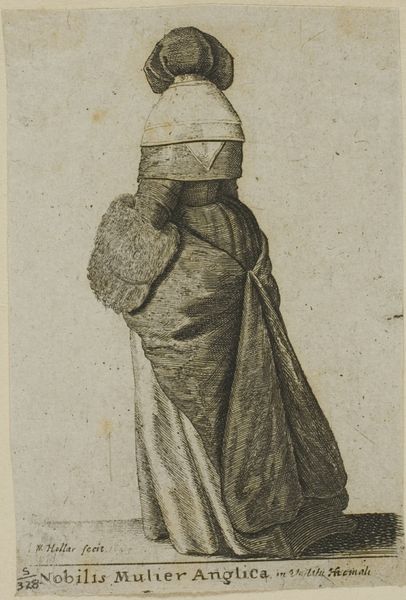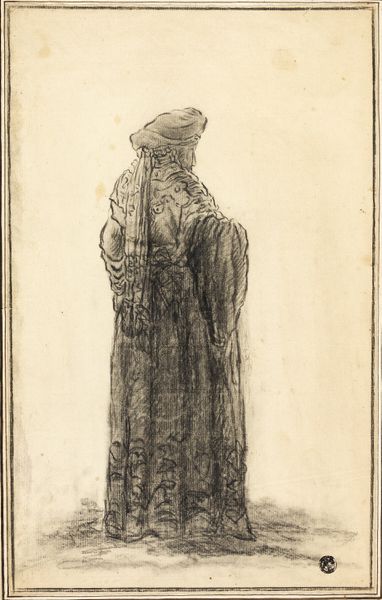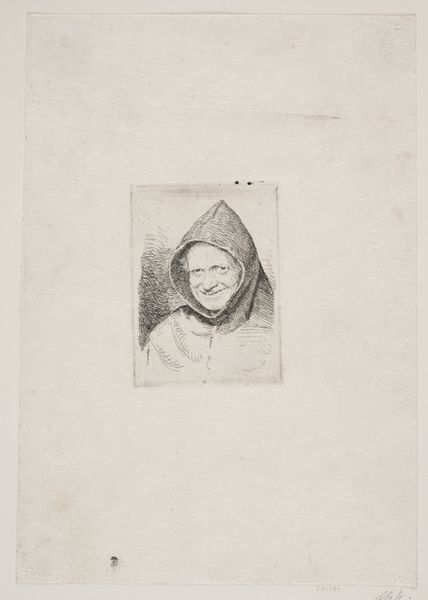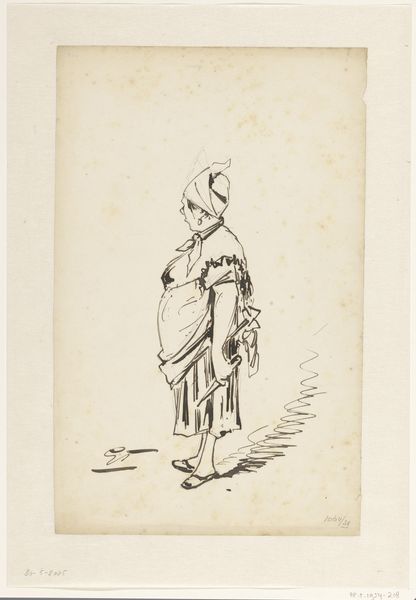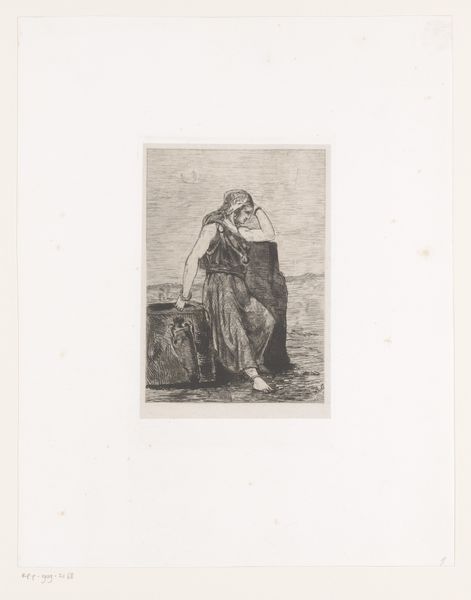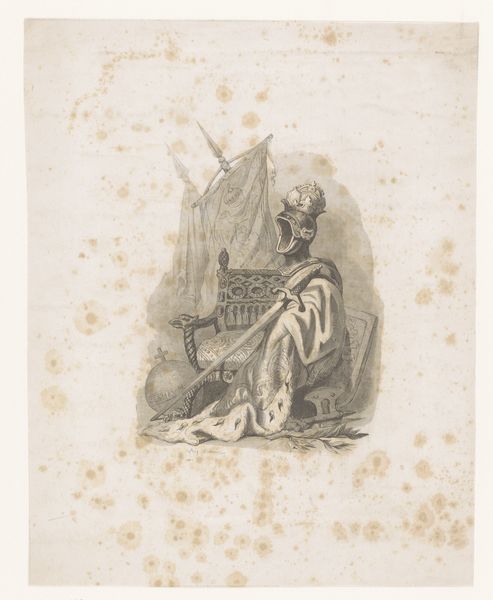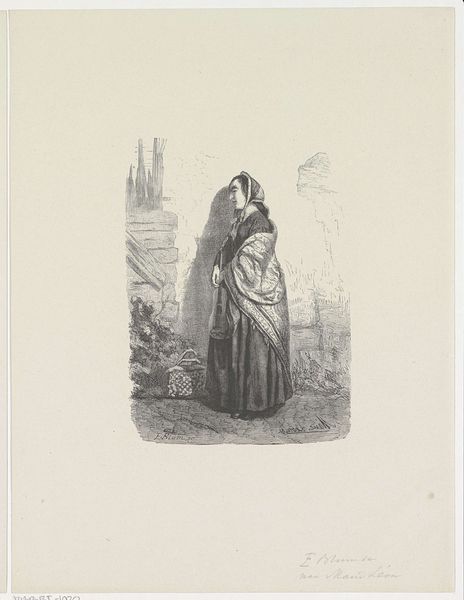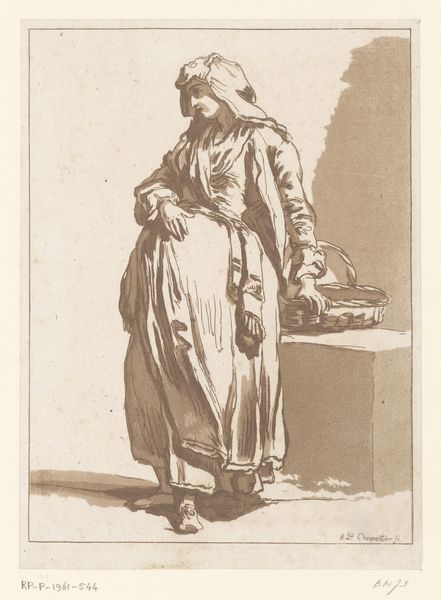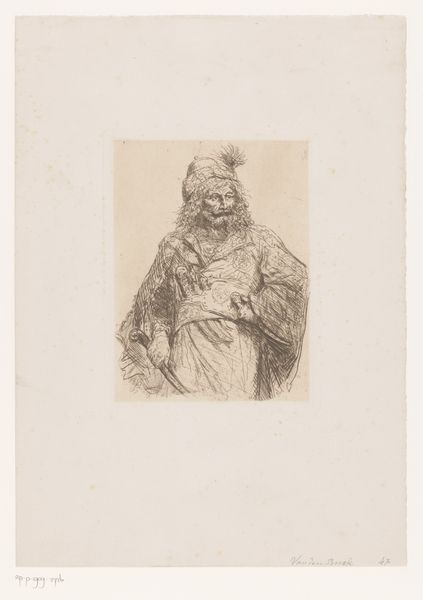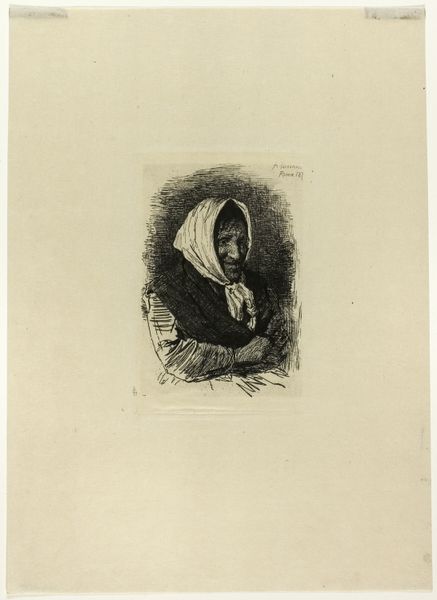
drawing, print, etching, engraving
#
portrait
#
drawing
# print
#
etching
#
pencil sketch
#
figuration
#
genre-painting
#
engraving
#
realism
Dimensions: 165 mm (height) x 145 mm (width) (bladmaal)
Editor: Here we have Vilhelm Kyhn’s "A Begging Monk", created as an etching in 1842. It’s a strikingly stark image, almost austere, wouldn’t you agree? What stands out to you? Curator: Indeed. Its austerity speaks volumes about its cultural moment. Genre paintings like this, particularly depictions of the poor and marginalized, became popular as a way to critique societal inequalities. Think of it in the context of 19th-century social reforms and rising nationalism; how do you think an image like this could contribute to such conversations? Editor: Well, showing a monk in poverty might challenge the church's power and wealth. It creates a human connection that invites empathy, maybe even action. Curator: Precisely! And notice how the etching technique – the precise lines and stark contrasts – lends itself to a certain realism, aiming for authenticity. But, crucially, whose ‘authenticity’ is being represented? Kyhn, as a member of the educated elite, is framing this representation for a particular audience. The image functions as a window into a life, but it is also very much a mirror reflecting the values and biases of the society consuming it. What does this artwork reveal to you? Editor: I suppose I hadn't considered the artist’s role in shaping how poverty is viewed. It’s less a neutral observation and more of a statement, influenced by the art world. Curator: Exactly. Art is rarely, if ever, neutral. Considering the historical context lets us engage with not just the "what" but also the "why" and "for whom." Editor: This has broadened my understanding, shifting my focus from simply seeing the image to thinking about the artist's choices and societal implications. Curator: It's a powerful reminder that art is a product of its time, shaped by, and in turn shaping, the world around it.
Comments
No comments
Be the first to comment and join the conversation on the ultimate creative platform.

